Dear Reader, in this age of AI created content, please support with your goodwill someone who works harder to provide the human-made. Sign up at the top of the lefthand column or bottom of this page. You will receive my hand illustrated monthly newsletter RESTORE NATURE and access to the biodiversity garden design course as I write...and nothing else, I respect your time. I am also removing the advertizing as best I can as its become intrusive inappropriate and pays me nothing.
Simple ways to care for the earth
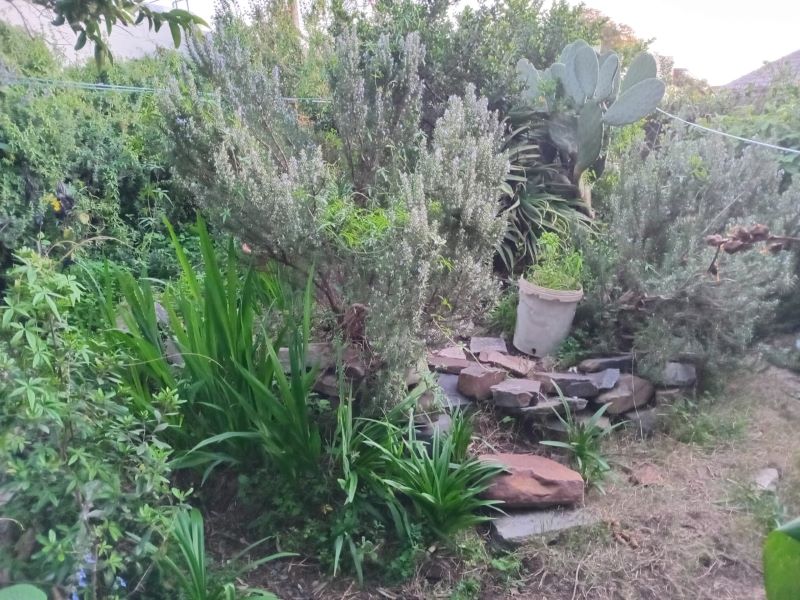 The rosemary is now taller than I am
The rosemary is now taller than I amA natural garden, ten years on.
Our garden was started a decade ago. Looking back I see some simple ways to care for the earth and can endorse that they work.
If the articles in this website were date stamped you would see that the earlier photographs have a lot of bare ground and stunted suffering vegetation, mostly succulents, and that the plants have become taller, lusher and the garden shadier with time. I have also noticed that some vegetables I could not grow back then will grow now in certain spots. One can definitely say that the soil fertility is slowly improving.
Taking care of the earth is caring for soil
The improvement in fertility is I think due to practicing some of what permaculture and regenerative agriculture teaches. This being :
Keep your biomass
I do not to remove plant material from my garden. I no longer take cut trees to the municipal dump. I process the brush in the garden and it ends up as material for burning, for making dead hedges and hugel beets and for composting. I learned this principle from closing cycles in permaculture. Removing plants from the garden removes valuable carbon and nitrogen as well as the minerals in the plant tissues, and this can slowly deplete your soil. So can harvesting food, but I put back a lot of food residue from outside into the garden, as well as humanure and other manures added to the compost.
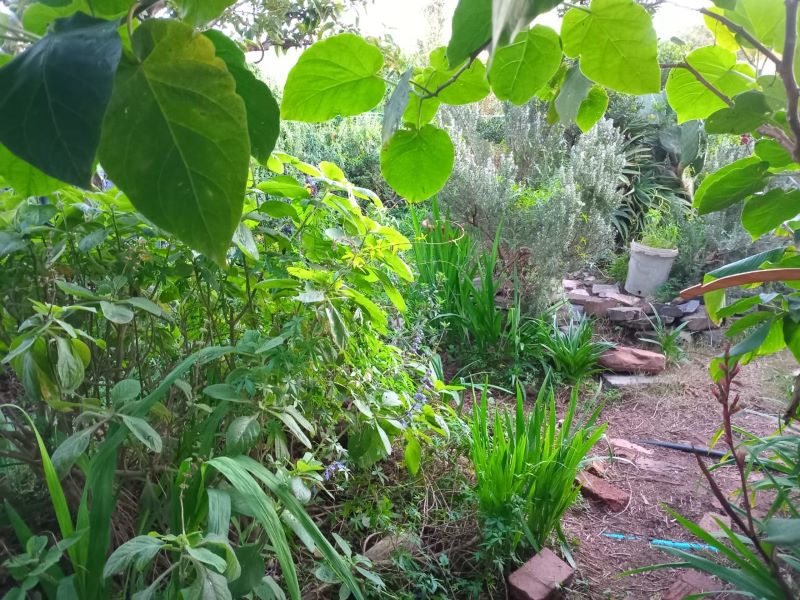 The soil is shaded by tall and short plants
The soil is shaded by tall and short plantsNow that the garden is so shady, my largest task has become the cutting back of invaders like Ipomea, that kills other plants, and the processing of biomass from this type of clearing, and from cutting back trees. The cutting back serves a dual purpose, providing both light and compost for growing food plants. However I do wish it were less time consuming and I'm constantly thinking and writing about ways to do this with less time investment.
Keep the soil covered
I keep the soil covered at all times and I don't weed. Sometimes if I want to plant up an area with corn or beans I'll cut back large weeds, stamp on the rest, lay down cardboard or newspaper, place compost on top and plant. Then I mulch with dried grass, wood chips or chopped leaves. I've taken to multiplying ground covers wherever possible to have living mulch.
Keep roots in the soil
Regenerative agriculture and other soil emphasizing methods teach one that the exudates from roots are the single most powerful soil improver there is. Dead roots decompose and loosen the soil and also add humus. I always try to leave living roots in the soil, be they of weeds or other plants. The only plants I remove completely are invaders such as Ipomea and quack grass, as they can grow back from root remnants.
Rotate crops and till only in emergencies
Crop rotation, as once double digging used to be, is seen as a necessity. Perhaps they should both only be used to alleviate problems. I find crop rotation can be harmfull in that plants like climbing beans sometimes grow better where they grew last year. I learned this from experience and not from any teaching. Using no till methods and adding plenty of compost when I plant out gets me the best results.
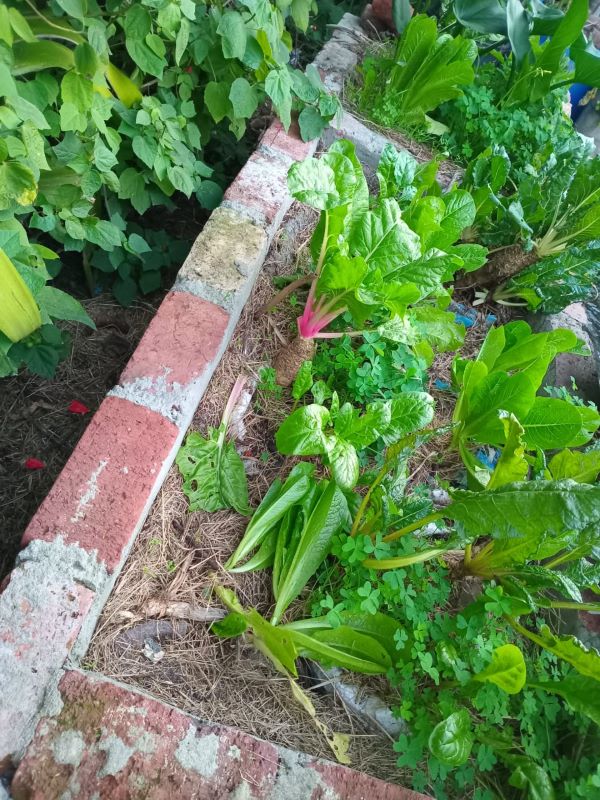 The sixth year in, my grey water grow beds are producing all the chard we need without soil replacement.
The sixth year in, my grey water grow beds are producing all the chard we need without soil replacement.Grow perennials
Ripping out annual plants, digging up soil and replanting several times a year all damage the soil microbiome. I've found ways of growing more perennials in the garden, including food plants. Fruit trees, asparagus, and vining leafy vegetables all help.
Taking care of the earth involves supporting native biodiversity
Though the garden, such as it is, seems to be maturing I would like to do more for the wildlife, for biodiversity in my garden. The steps towards doing this would be:
Grow natives
Native plants are adapted to the local climate and soils and with their intimate relationships with local wildlife are the greatest foundation for biodiversity in the garden. This I've learned from proponents of wildlife and biodiversity gardening of course. I'm constantly working on increasing the native component in my garden. It is hard because they are expensive and thus my garden is full of weedy, easy to grow exotic plants you can steal in public places. I'm buying indigenous seed and trying to raise plants, and harvesting some seed in the wild, but its a slow process.
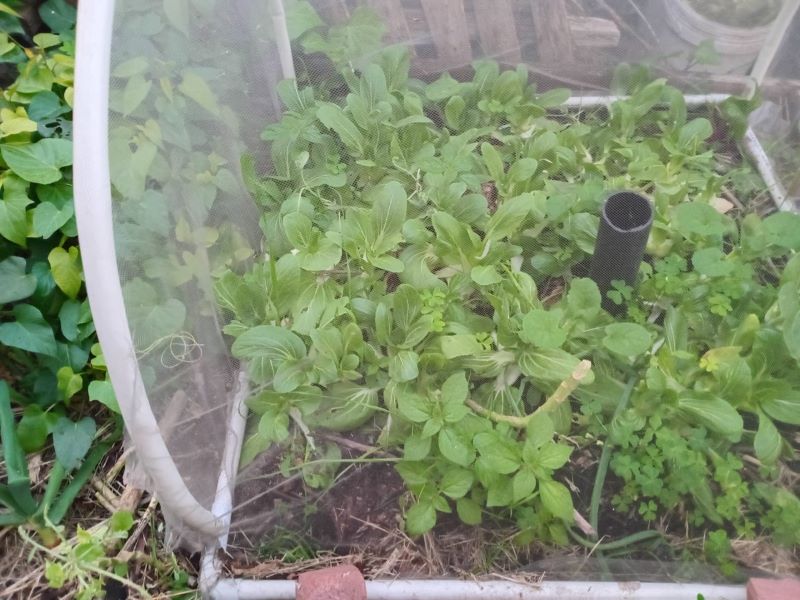 Mum's pak choi. Sometimes you don't want to feed the insects
Mum's pak choi. Sometimes you don't want to feed the insectsFeed insects
Wildlife needs water, food, shelter and nesting space. So I've tried to plant some native plants that are known to support several herbivorous insects. The dead wood, fungi and pond life all seem to promote insect populations and the quantity of insect eating geckos is increasing a lot. Some times of the year the Vichellia is in bloom and that oversupplies. However I am short on flowers for the pollinators being spaced through the year. When planting for pollinators remember it takes many caterpillars to produce a butterfly so don't just plant flowers for the mature insects but plant plenty of host plants for the larvae.
Create microhabitats
The more diverse the habitats are the more biodiversity can be accommodated and attracted. I've made lizard hotels out of piles of concrete shatter, drill holes in dead tree stumps, tie bunches of fine hollow bamboo everywhere there is shelter from the rain, have forest areas (too many perhaps), wild berry plants, sheltering hedges and open sunny areas, lots of overgrown vegetation, trees, ponds, some sandy banks hidden in the rockery, dry and wet grow beds and of course lots of piles of wood.
Maintain diverse soil regimes
Native flowering annual plants, the mainstay of native pollinators, tend to be more diverse in poorer soils in most parts of the world. Therefore universally increasing fertility is not aimed for. You can decrease fertility by removing biomass from an area steadily over several years. Fertility is for the food growing areas, and you can take the biomass there. Our native flowers need a lot of sun, a little problematic in an increasingly overgrown space. I would have planned in more open areas if I'd known what I know now ten years ago. A bank of bare mud or a mud coated wall can house a lot of insects that like to nest there. Some such as ground bees also need sheltered patches of sand.
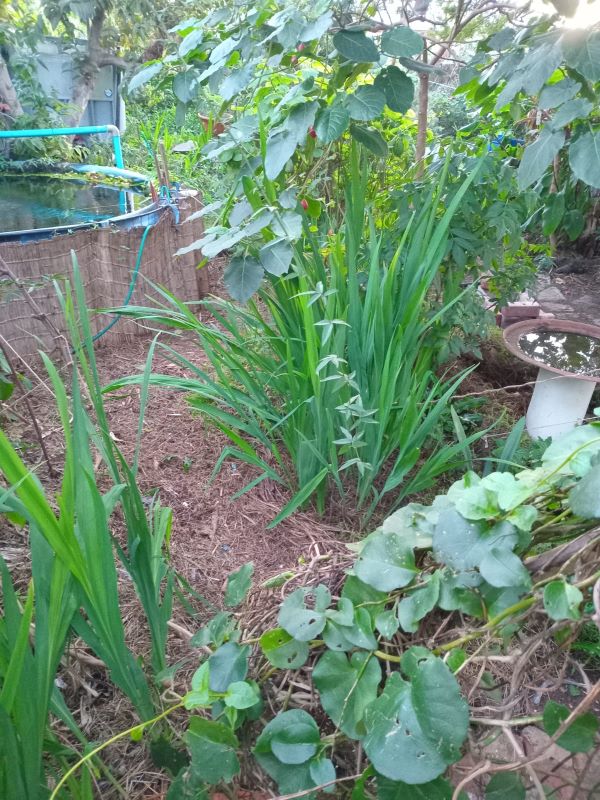 Native Chasmanthe delight in winter and no work involved
Native Chasmanthe delight in winter and no work involvedSometimes simplicity is needed
I hope my account of these tried and tested simple ways to care for the earth is useful. I'm suffering from exhaustion and depletion of my own self at the moment due to an unpaid job which has ballooned into a full time occupation for two years. Simplicity is a necessity now. I do what I can.
regenerative and wildlife gardening blog
garden pests and other delights
Restore Nature Newsletter
I've been writing for four years now and I would love to hear from you
Please let me know if you have any questions, comments or stories to share on gardening, permaculture, regenerative agriculture, food forests, natural gardening, do nothing gardening, observations about pests and diseases, foraging, dealing with and using weeds constructively, composting and going offgrid.
Your second block of text...
SEARCH
Order the Kindle E-book for the SPECIAL PRICE of only
Prices valid till 30.09.2023
Recent Articles
-
garden for life is a blog about saving the earth one garden at a time
Apr 18, 25 01:18 PM
The garden for life blog has short articles on gardening for biodiversity with native plants and regenerating soil for climate amelioration and nutritious food -
Cape Flats Sand Fynbos, Cape Town's most endangered native vegetation!
Apr 18, 25 10:36 AM
Cape Flats Sand Fynbos, a vegetation type found in the super diverse Cape Fynbos region is threatened by Cape Town's urban development and invasive alien plants -
Geography Research Task
Jan 31, 25 11:37 PM
To whom it may concern My name is Tanyaradzwa Madziwa and I am a matric student at Springfield Convent School. As part of our geography syllabus for this
"How to start a profitable worm business on a shoestring budget
Order a printed copy from "Amazon" at the SPECIAL PRICE of only
or a digital version from the "Kindle" store at the SPECIAL PRICE of only
Prices valid till 30.09.2023







